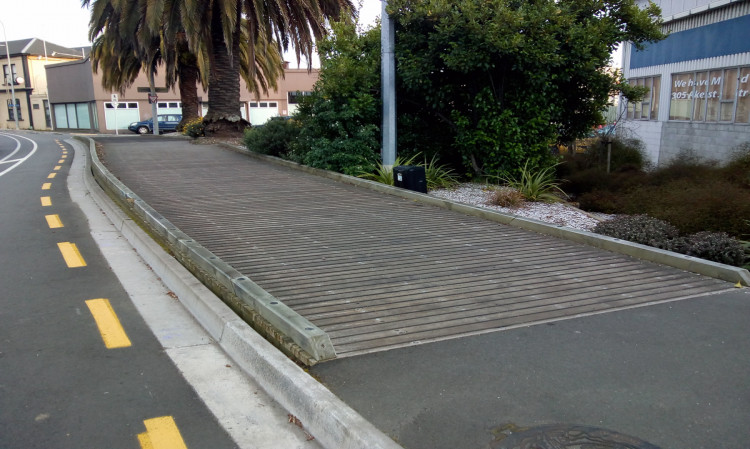All surfaces on which pedestrians walk should be firm, stable and slip resistant even when wet.[1]
This also prevents puddles from forming. Surfacing that is not smooth (eg cobbles) are less comfortable for pedestrians to use.
Changes in height due to tree roots can be minimised through careful selection, placement and management of tree species. For new or renewed footpaths near protected or desirable trees, consider using permeable concrete or pavers for water infiltration. Pavers also allow adjustments to the footpath in response to root growth rather than having to excavate and relay concrete.
Where footpaths incorporate structures such as footbridges, refer to the New Zealand building code – access routes for design and surfacing advice.[2] Auckland Transport also provides useful information for designers of minor structures.[3]
|
Characteristic |
Key points |
Source or further information |
|
Slip resistant |
Slip resistance requirements shall have a mean coefficient of friction not less than 0.4 when tested in accordance with AS/NZS 4663 and are further discussed in PNG: Falls - slips, trips and stumbles |
Standards New Zealand. (2004). AS/NZS 4663:2004 Slip resistance measurement of existing pedestrian surfaces(external link) |
|
Slip resistance on footbridges and boardwalks |
Section 18.3 of Auckland Transport Code of Practice(external link) |
|
|
Level: surface tolerances |
To minimise stumbling hazards, undulations in otherwise even surfaces should not deviate from a 3m straight edge by more than 5mm at any point |
Austroads. (2017). Guide to Road Design Part 6A Paths for Walking and Cycling section 5.10 Surface Tolerances(external link) |
|
Level: design elements |
Dished channels for drainage should not be incorporated within the footpath through zone |
Department for Transport. (2002). Traffic Advisory Leaflet 6/02: Inclusive Mobility: A Guide to Best Practice on Access to Pedestrian and Transport Infrastructure(external link) |
|
Short, sudden changes in the surface, such as single steps, should be avoided as they are unexpected and can cause pedestrians to trip or catch the front wheels of wheelchairs and prams. |
Standards New Zealand. (2001). NZS 4121:2001 Design for access and mobility – buildings and associated facilities.(external link) |

Boardwalk constructed to avoid tree roots Nelson (Photo: Mark Edwards)
[1] Section 4.6 of Standards New Zealand NZS 4121:2001(external link) and section 5.9 of Austroads (2017) Guide to Road Design Part 6A: Paths(external link)
[2] Department of Building and Housing. (2011). Compliance Document for New Zealand Building Code Clause D1 Access Routes – Second Edition.
[3] Section 18.3 of Auckland Transport Code of Practice